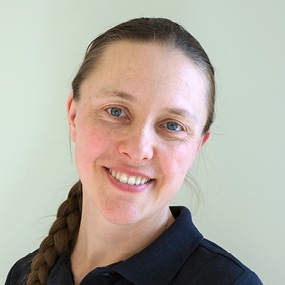Why we need a new curriculum

Dr Jenny Parsons, Consultant Anaesthetist and College Tutor at Raigmore Hospital in Inverness, attended the RCoA’s virtual Regional Leads Day on 26 February. Here she explains why the 2021 Curriculum will improve both the trainer and trainee experience.
"It’s not really going to change though, is it? Not fundamentally. We’ll train them like we’ve always trained them. And then with the rebranding and new acronyms instead of signing a CBD it’ll be an SLE or LBW. We’ll still sign it whatever it’s called because if we don’t then trainees won’t progress.”
Before attending the first learning day on the 2021 Curriculum, I asked some colleagues, both trainers and trainees, for their thoughts and insights. I wanted to know what they thought was the reason for change. What did they dislike about the current system of training and assessment? What did they hope to find in the new curriculum? And what did they believe was actually going to be there? I asked what they wanted to know.
One said that what we have now is long, pedantic and prescriptive with excessive workplace-based assessments (WBAs). They’d heard the new one places more emphasis on the non-clinical. Others felt that there had been far too many changes in training and assessment made already. A big one was “Will the 2021 Curriculum be able to detect and manage the struggling trainee?”
No one wanted to know the new philosophy. They didn’t want to know the written curriculum any more than strictly necessary. They were keen to know the tested curriculum and teach to that. We are accustomed to two parallel training processes. One to become a competent anaesthetist, and one to complete the requirements of the RCoA.
This last point is exactly why the current curriculum needed review. This carefully crafted, lovingly developed 2010 curriculum, which took countless hours of painstaking work and was based on the best evidence and education theory at the time. It took the abilities and attributes of a trained anaesthetist and divided them into hundreds of more manageable and objectively assessable sub-units. It contains well thought out specifically worded ‘Core Learning Outcomes’ at each stage for each aspect of anaesthetic practice. It also recognises the power of conscious reflection and formative assessment.
But once the 2010 Curriculum hit the real world, we seldom looked past the WBA. Nor did we need to. It became, “…a list of the hurdles to be jumped…” You need 19 WBAs for the IAC. 12 more for the IACOA. A trainee needs 1 CEX, 1 DOPS, and 1 CBD for each Unit of Training. The collection of 24 completed Units of Training equates to satisfactory evidence of clinical competence at core level – and so it goes on. The Generic Professional Capabilities recently emphasised by the GMC’s framework document are already incorporated into the current curriculum, but the onus to deliver evidence of achievements was effectively delayed until the completion of training.
The value of a meaningful learning experience in theatre can be eclipsed by the need to produce a satisfactory WBA. The structure of the current curriculum tempts us all to focus on the acquisition of these rather than on the Core Learning Outcomes. Dissociation of process from real progress is causing real tension and a loss of transparency. Joe Lipton explained how this is being addressed.
The 2021 Curriculum doesn’t change the blueprint of the anaesthetist we are aiming to create, but it alters the pathway there and pulls the focus of assessment back to real progress. It promises to give the voice back to experienced anaesthetic professionals and surely that must be a good thing.
Dr Jenny Parsons
